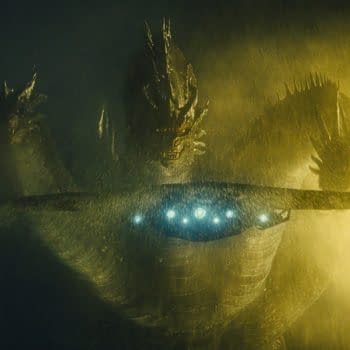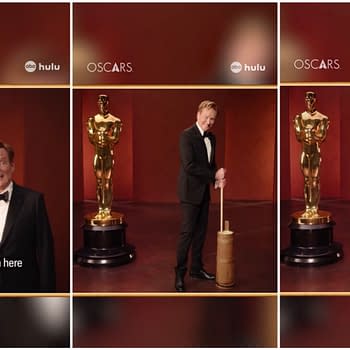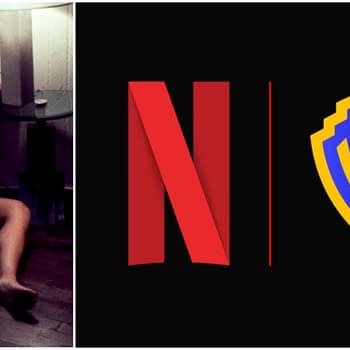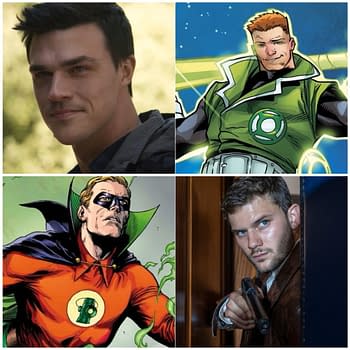Posted in: Movies, Review | Tagged: film, hidden figures, movie, Review
Review: 'Hidden Figures', Finally A Story Celebrating Women In The Space Race
Rating: 4.5 stars out of 5.
This time of year, a lot of movies that get "limited" releases in the days before the New Year are just meant as award bait – they're tossed in there because they've got the right combination of elements that the Academy just falls all over itself to vote for. Hidden Figures is film that's actually damned good, and it deserves all the attention that it's going to receive.
The film is about three friends – Mary Jackson (played by Janelle Moane), Katherine Johnson (Taraji P. Henson), and Dorathy Vaughan (Octavia Spencer). All brilliant minds working at NASA during the early days of the American space program (specifically in the time just before the first of the Mercury missions). We've seen films about that general era before (with The Right Stuff still being the top of the list), however what makes this one special is that it's about the African American women who fought to contribute to put the US into the race.
Directed by Theodore Melfi, who has had only one other feature film directing credit (St. Vincent), creates a vibrant and honest feeling portrayal of the early 1960s. With a script by Allison Schroeder from the book by Margot Lee Shetterly, the story feels honest, and the pacing is such that even with three women fighting very individual battles within the good ol' boys club at NASA, it never feels like we're going off on an extraneous tangent.
The core story arc is around Katherine, who is a day-task assigned "computer" (back when that was an actual job title) that finds herself assigned to the workgroup trying to crunch the numbers to get a human launched into space (and ideally back again in one piece). Mary works with the Mercury capsule design team but denied the ability to be an engineer because she doesn't have a degree (and the only school offering the classes she needs are held at an all-white school). Dorathy is doing the job of managing and coordinating the computer pool of 30+ women, but denied the supervisor's position because of her skin color.
Each women encounters men who help them, and others that can't believe that they would presume to be in a men's world, let along a white one. On her first day, Katherine goes to get some coffee in the office and everyone freezes like she had just killed their puppy. The next day she finds a small antique pot with a "colored" label attached to it.
The film follows a relatively predictable pattern, you know there'll be setbacks and disappointments, but you also learn early on that these women are brilliant and not at all inclined to be told that they can't do anything. As Katherine pus it at one point to a suitor who is surprised to find out that she's working for NASA,
Another shout out goes to the film having one of the best comebacks of the year. When Kirsten Dunst as an oppressive manager overseeing the computer department tells Katherine, "I really don't have anything against you people." Katherine smiles and simply replies, "I'm sure you believe that." To modern eyes the idea of segregated bus sections, classrooms, bathrooms, and coffee pots is jarring and dramatic, even more so because of the mythos built up around NASA as an institution of advanced thinking and wisdom. To find that it was just as exclusionary as much of the rest of the country is another harsh truth that's long overdue to be highlighted.
When a new IBM computer is being installed which will threaten the need for the large pool of workers, Dorathy doesn't wait for someone to give her permission to do something. She takes it into her own hands, teaches herself how to program and begins to teach the rest of her department how to do the same.
Kevin Costner plays Al Harrison, a NASA senior manager (whose character was an amalgamation of several of the men who worked at NASA at the time) who is brilliant, and while not outwardly racist, begins to realize that while he's had his head down in the numbers, he has (perhaps all his life) permitted the oppression and racism to exist around him. On learning that Katherine has to go a mile round-trip to get to the only colored bathroom on the NASA campus, he beats down the sign with a crowbar and declares that they can use the bathrooms anywhere. As he says, "we all pee yellow at NASA."
The film follows along until shortly after the completion of John Glenn's first orbital flight. With his recent passing it's all the more moving to see him once again, and being supportive and encouraging of everyone (of all colors) who are working to get him up and back safely.
As an aside, when I went to the screening in San Francisco, other than critics, the theater was filled with members of the NexGene Girls. An organization that provides opportunities to young girls of color from low-income communities to learn about the sciences. As a white viewer, I can appreciate the film only through my own experience, however getting to share in experiencing the film with the people who it is most designed to inspire and motivate was in and of itself a wonderful moment. When the characters on screen stood up for themselves and kept moving forward, the pride that filled the room was amazing. The real-live Mary, Katherine, and Dorathy, would have been very proud to find themselves up on screen and motivating an entirely new generation to follow in their footsteps.








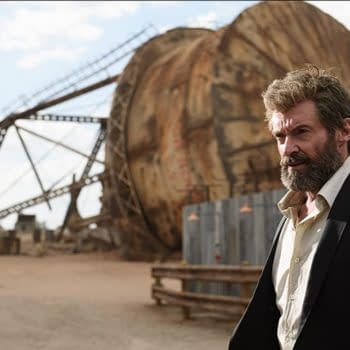
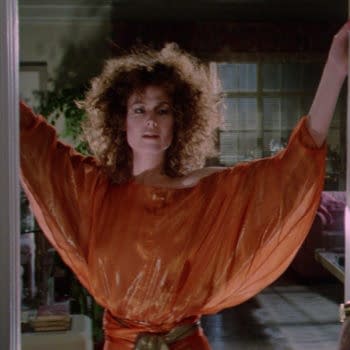
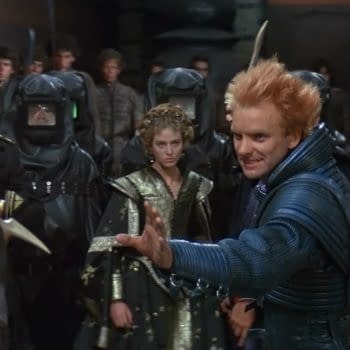
!['Rocketman' Soars With Warts and All Elton John Story [Review]](https://mlpnk72yciwc.i.optimole.com/cqhiHLc.IIZS~2ef73/w:350/h:350/q:75/rt:fill/g:ce/https://bleedingcool.com/wp-content/uploads/2019/01/rocketman.3-350x350.jpg)
